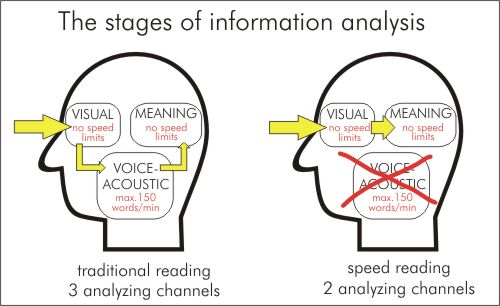Search |
Practice Speed Reading and other Reading Skills with The Harvard Classics
Speed Reading – is a technique used to improve one's ability to read quickly. The most prominent methods include the following: Chunking, Skimming, Eliminating Sub-vocalization, Meta guiding, RSVP.
Skimming – is a process of speed reading that involves visually searching the sentences of a page for clues to its meaning. It is argued by some to be skipping and scanning, not actual reading of the entire text. Eliminating Sub-vocalization – Sub-vocalization is the internal speech made when reading a word. It is a natural process when reading and helps to reduce the cognitive load, and helps the mind access meaning that enables it to comprehend and remember what is being read. It is somewhat of a hot debate in speed reading circles, but it is argued that sub-vocalization slows down the rate at which one reads, thus eliminating or reducing sub-vocalization will improve one’s reading speed. Meta guiding – is the visual guiding of the eye using a finger or pointer, to help the eye move faster along the length of a text. Sometimes drawing boxes or circles on the page to increase the visual span to take in the whole line and imprint the information into their subconscious for later retrieval. Meta guiding is also thought to reduce sub-vocalization, thus increasing the speed of reading. RSVP - Rapid Serial Visual Presentation is the method of displaying text word-by-word in a fixed focal position. It is used to increase one’s reading speed and to provide access to long text on small displays.
Question - Formulate questions about the content of the reading. For example, convert headings and sub-headings into questions, and then look for answers in the content of the text. Read - Use the background work done with "S" and "Q" in order to begin reading actively. Recite - or Recall key phrases. The reader identifies major points and answers to questions from the "Q" step. Review – the reader should test oneself by attempting to recall the key phrases identified, then immediately review the sections where key words were forgotten.
http://en.wikipedia.org/wiki/Speed_reading http://en.wikipedia.org/wiki/SQ3R |
